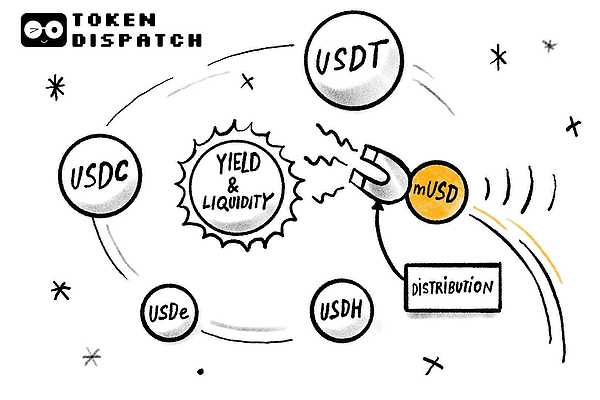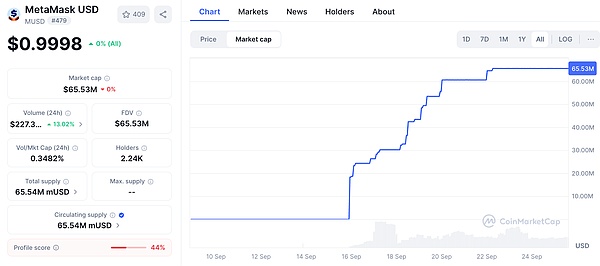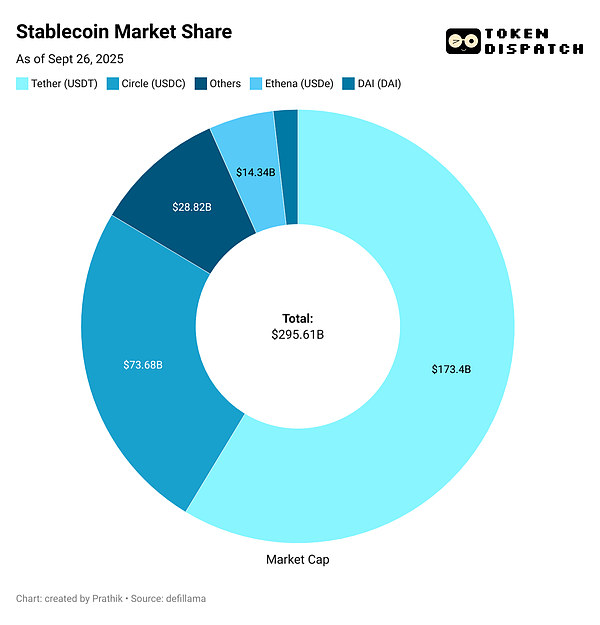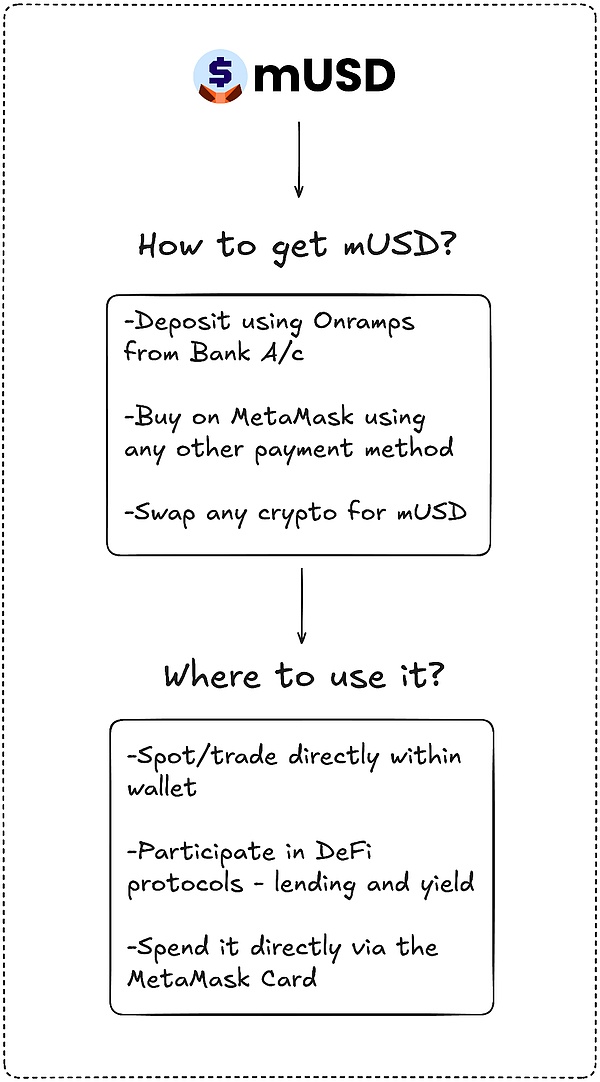Author: Prathik Desai
Translation: Block unicorn
Recently, every week feels familiar—another stablecoin launch, another attempt to change the direction of value. First, we saw the bidding war for USDH launched by Hyperliquid; then we discussed the trend of verticalization to capture U.S. Treasury yields. Now, it's the native mUSD from MetaMask. What connects all these strategies? Distribution capability.
Distribution capability has become a cheat code, not only in the cryptocurrency space but across various fields, to build a thriving business model. If your community has millions of users, why not leverage it and directly distribute tokens into their hands? However, this doesn't always work. Telegram attempted to achieve this with TON, claiming to have 500 million messaging users, but those users never migrated on-chain. Facebook also tried this with Libra, believing that its billions of social media accounts could form the basis of a new currency. Theoretically, both projects seemed destined for success, but in practice, they failed.
This might be why MetaMask's mUSD (with fox ears and the "$" symbol on top) caught my attention. At first glance, it looks like any other stablecoin—backed by regulated short-term U.S. Treasury bonds and issued through a framework developed using the M0 protocol via Bridge.xyz.
But what makes MetaMask's mUSD different in the current $300 billion stablecoin market dominated by dual oligopolies?

MetaMask may be entering a highly competitive field, but it has a unique selling point that other competitors cannot match: distribution. With 100 million annual active users globally, MetaMask's user base is nearly unmatched. mUSD will also be the first stablecoin natively issued in a self-custody wallet, allowing users to purchase, swap, and even spend in stores using the MetaMask card with fiat currency. Users no longer need to search between exchanges, bridge across chains, or deal with the hassle of adding custom tokens.
Telegram lacked this product-user behavior fit, while MetaMask has achieved it. Telegram attempted to transition its messaging users to the blockchain for decentralized finance applications. In contrast, MetaMask enhances the user experience by integrating a native stablecoin within the app.
Data shows that the adoption of this initiative is rapid.
MetaMask's mUSD market cap skyrocketed from $25 million to $65 million in less than a week. Nearly 90% of the funds came from the Layer 2 platform Linea within ConsenSys, indicating that MetaMask's interface effectively guides liquidity. This leverage is similar to past operations by exchanges: in 2022, Binance automatically converted deposits into BUSD, causing circulation to surge overnight. Whoever controls the users controls the tokens. MetaMask has over 30 million monthly active users, the most in the Web3 space.

This distribution capability will set MetaMask apart from early participants who attempted to establish sustainable stablecoins but failed.
Telegram's grand plans partially failed due to regulatory issues. MetaMask sidesteps this by partnering with Bridge, a publisher under Stripe, and backing each token with short-term Treasury bonds. This meets regulatory requirements, and the newly introduced GENIUS Act in the U.S. provides a legal framework from day one. Liquidity will also be key. MetaMask is injecting mUSD trading pairs into Linea's DeFi, betting that its internal network can solidify its application.
However, distribution does not guarantee success. The biggest challenge MetaMask will face will come from existing giants, especially in a market already dominated by a few major players.
Tether's USDT and Circle's USDC account for nearly 85% of the entire stablecoin market. In third place is Ethena's USDe, with a supply of up to $14 billion, attracting users due to yields. Hyperliquid's USDH has just launched, aiming to reinvest exchange deposits back into its ecosystem.

This brings me back to the question: What exactly does MetaMask want mUSD to become?
USDT and USDC seem unlikely to face direct challengers. Liquidity, exchange listings, and user habits all favor the existing giants. mUSD may not need to compete head-on. Just as I expect Hyperliquid's USDH to benefit its ecosystem by delivering more value to the community, mUSD is likely also aimed at extracting more value from existing users.
Whenever new users deposit through Transak, whenever someone swaps ETH for the new stablecoin within MetaMask, and whenever they swipe their MetaMask card in stores, mUSD will be the preferred choice. This integrates the stablecoin as the default option within the network.
This reminds me of the days when I had to bridge USDC between Ethereum, Solana, Arbitrum, and Polygon, depending on what I needed to do with my stablecoin.
And mUSD ends all the cumbersome bridging and swapping.

Then there's another important takeaway: yield.
With mUSD, MetaMask can earn yields from the U.S. Treasury bonds backing the token. For every $1 billion in circulation, that means tens of millions of dollars in interest flowing back to ConsenSys each year. This would transform the wallet from a cost center into a profit engine.
If just $1 billion of mUSD is backed by equivalent U.S. Treasury bonds, it could generate $40 million in interest income annually. In comparison, MetaMask earned $67 million from the fees it charged last year.
This could open up another passive and significant revenue stream for MetaMask.
However, there is one factor that makes me uneasy. For years, I have viewed wallets as neutral tools for signing and sending. mUSD blurs that line, turning a once-trusted neutral infrastructure tool into a business unit that profits from my deposits.
Thus, distribution is both an advantage and a risk. It could make mUSD the default sticky choice, but it could also raise concerns about bias and lock-in. If MetaMask adjusts the exchange process to make the path for its own token cheaper or prioritize its display, it could make the world of open finance less open.
There is also the issue of fragmentation.
If every decentralized wallet starts issuing its own dollar, it could create multiple closed currencies instead of the interchangeable USDT/USDC duopoly we currently have.
I don't know where this will lead. MetaMask has effectively closed the financial loop of purchasing, investing, and consuming mUSD by integrating it with the card. The growth in the first week shows it can overcome the initial hurdles of launch. However, the dominance of existing giants indicates how challenging it is to climb from millions to billions.
I don't know where this will lead. MetaMask has effectively completed the financial loop of purchasing, investing, and consuming mUSD by integrating it with the card. The growth in the first week indicates it can overcome the initial launch hurdles. However, the dominance of existing giants shows how challenging it is to climb from millions to billions.
Between these realities lies what may determine the fate of MetaMask's mUSD.
免责声明:本文章仅代表作者个人观点,不代表本平台的立场和观点。本文章仅供信息分享,不构成对任何人的任何投资建议。用户与作者之间的任何争议,与本平台无关。如网页中刊载的文章或图片涉及侵权,请提供相关的权利证明和身份证明发送邮件到support@aicoin.com,本平台相关工作人员将会进行核查。



